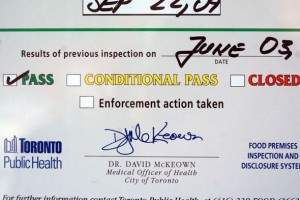Illness happens on planes, and when it does it’s miserable.
In 2009 I dealt with campylobacteriosis over a day of travel from Manhattan (Kansas) to Raleigh. In 2013, then four-year-old Jack yacked on a flight which led to a fascinating approach by Delta Airlines involving plastic bags to contain the risk and coffee pods to manage the smell. The flight crew let us off the plane first (although we were in the second-to-last row) as we potentially inoculated the plane and passengers with norovirus.
According to MyFoxOrlando, the Shirley family encountered a bunch of vomit on a United flight to DC – and maybe their own norovirus inoculation event.
Scott Shirley had boarded a United Airlines flight with his wife and son when the trio noticed an unusual smell after placing their carry-on bags underneath their seats. After realizing their bags were damp, the family recognized the odor as vomit.
“She [Shirley’s wife] reached down and rubbed the ground and goes “the whole ground is wet,” and then she put it to her nose and goes “Oh my god! This is throw up,” Shirley explained to WUSA9.
Shirley says his wife (who ironically, works for FDA -ben) suffers from mysophobia — fear of germs– and she immediately began crying she was so upset. The airline did acknowledge that a passenger seated in that area had become sick on an earlier flight but the family was told it had been cleaned by the cabin crew.
“It was clear that no one had cleaned the area where we were sitting, because there was no evidence of any chemical smell what so ever. This was purely that distinct smell of vomit on our hands and backpacks,” Shirley told the Daily Mail.
CDC recommends using a chlorine bleach solution with a concentration of 1000–5000 ppm to clean and disinfect an area where someone has vomited. Hard to do that on a plane with all the carpet.











